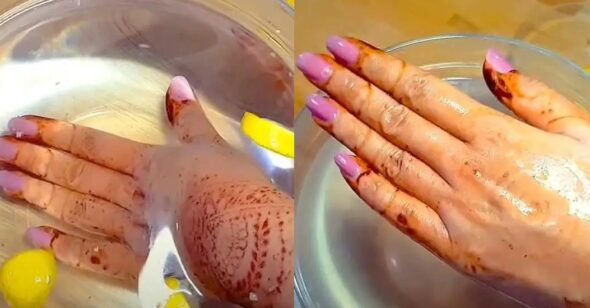Summary: What can red spots on the skin mean?
Red spots on the skin (erythema) can be a symptom of various skin diseases, allergies, or other health problems. Depending on the trigger, the red spots appear on the skin all over the body or only a few areas of the skin are affected. We give you an overview of the possible causes and explain when action is required.

Skin diseases associated with red spots on the body
In some skin diseases, red spots appear on the body as a symptom. This is the case, ឧទាហរណ៍, with the following diseases:
Eczema: There are different types of eczema, each of which can cause different symptoms, including red patches on the body. Typical symptoms of eczema are itching, redness, scaling, and weeping. The arms, hands, skin folds, and the skin on the head and face are most commonly affected. The inflammatory skin disease can be acute or chronic.
Depending on the type of eczema, treatment takes the form of suitable care or therapy prescribed by a doctor (e.g. the use of an ointment containing cortisone).
Neurodermatitis (atopic eczema): You can recognize acute flare-ups of neurodermatitis on the body by dry, reddened, and scaly areas of skin that cause itching. The skin changes associated with neurodermatitis occur primarily on the neck and décolleté, on the inside of the elbows and knees, on the hands and feet, and on the face and scalp.
Acute relapses are treated with drugs prescribed by the dermatologist. Appropriate care products should be used to support this, and triggering factors should be avoided.
Psoriasis: Redness and thickening, some covered with scales, in the form of reddish spots (so-called plaques) occur here. The sharp delimitation of the red spots on the skin is characteristic. Psoriasis is treated with topical (external) drugs. You can strengthen the skin with suitable care products and adapt your lifestyle.
This includes a balanced diet with lots of fresh fruit, vegetables, and whole grain products. Good stress management and, ideally, avoiding alcohol and nicotine can also have a positive effect on the skin.
Skin fungus: Fungal infections on the skin usually occur in skin folds because the climate there is warm and humid. However, other parts of the skin can also be affected. Redness, scaling, and itching are typical symptoms.

Info: If you suspect you are suffering from one of these diseases, consult your dermatologist. They can make a diagnosis and prescribe appropriate therapy for you.
Other medical conditions that cause red spots on the body
Some other diseases also trigger skin rashes that appear in the form of red spots on the body.
This can be the case, ឧទាហរណ៍, with the following viral infections:
Shingles (Herpes Zoster)
With shingles, the appearance of red spots with blistering and severe burning pain is associated. The rash usually occurs on one side of the body. The onset of the disease is indicated by a general feeling of illness and fever. Then comes the painful rash. The condition must be treated with drugs for oral and topical use.
Measles
The skin manifestations of this disease first appear behind the ears and on the face and from there spread over the body. The red spots on the skin will darken in color after a few days and then fade away. In addition to the rash, measles has flu-like symptoms. Typical are fever, cough, cold symptoms, and sore throat.
Glandular Fever
Typical signs of infection with the Epstein-Barr virus are severely swollen lymph nodes, fever, and sore throat. The red patches on the skin that appear with this condition do not occur in everyone who suffers from them. The rash is visually reminiscent of measles.
Rubella
Typical are red spots on the skin (especially on the ears and face) that spread over the entire body. Other symptoms such as cough, headache, and runny nose can also occur. However, there are also many asymptomatic courses, ie sick people have no symptoms.
Tropical diseases such as dengue fever
Mottled skin rashes, severe bouts of fever, muscle pain, and a severe feeling of illness occur.
Chickenpox
Fever and an itchy rash are the typical symptoms of this disease, which often occur in childhood. With chickenpox, the rash spreads from the head over the body. First, small red spots develop on the skin, which later becomes the characteristic itchy blisters.
Bacterial infections that can cause red patches on the body include:
Lyme disease
Transmission is through tick bites. A circular reddening develops around the affected area of the skin. Lyme disease is treated with antibiotics.
Scarlet fever
With this typical childhood disease, the red patches appear on the skin in the armpits, chest, and groin area and then spread over the whole body. They are bright and raised and only a few millimeters in size. In addition, there is a sore throat, fever, fatigue, and a reddened tongue, which is also known colloquially as “raspberry tongue”. The doctor prescribes an antibiotic for treatment.
Info: Consult a doctor if you notice red spots on the skin and you are not sure whether the cause is one of the diseases described. Note that not all diseases and other causes that can occur in connection with skin redness are listed here.
Allergies that cause red spots on the body
Red spots on the skin (erythema) can also result from allergies to certain substances. The skin allergic reaction occurs after you have used certain cosmetics, ឧទាហរណ៍, or taken medicines, e.g. B. have taken antibiotics that were not tolerated. If you see or suspect you are having an acute allergic skin reaction after taking medicines, see a doctor.
Contact allergies also often cause red spots on the skin. Triggers for the allergic reaction are, ឧទាហរណ៍, metals (often nickel), fragrances in detergents, or cosmetic products that come into contact with the skin.
Polymorphic photodermatosis colloquially referred to as “sun allergy”, also manifests itself in red spots on the body and face – on the skin areas that have come into contact with UV light. Those who suffer from it should avoid the midday sun (11 a.m. to 3 p.m.) and use suitable sun protection.
What do red spots on the body mean that don’t itch?
The appearance of red spots, pustules, and nodules is also called a rash(med. exanthem) referred to. It is often accompanied by itching, but the rash can also appear as red patches on the body that are not itchy. Some diseases, ឧទាហរណ៍, cause skin changes that do not cause itching. These are mostly diseases caused by viruses.
These include, ឧទាហរណ៍, the Epstein-Barr virus and measles, mumps, and rubella viruses. Scarlet fever can also cause a rash, which appears as red patches on the body that do not itch. Another possible trigger for non-itching rashes: is stress. Some people also notice red spots on themselves after showering. Possible reasons for this are water that is too hot or an intolerance to the shower gel.
What to do about red spots on the body?
The skin symptoms subside if you have the causative disease treated according to the instructions of a doctor. Whether after a skin disease, during stress, or through unsuitable care: You can also do something good for your stressed skin by using cleaning products with mild surfactants that protect and strengthen the natural skin microbiome. Eucerin’s pH5 product series is ideal for cleaning and caring for allergy-stressed and dry skin. When showering, the pH5 shower oil protects the skin from drying out and reduces redness and irritation. In addition, the pH5 lotion ensures that the skin feels pleasantly soft and helps to restore the skin’s natural pH value.
When to see a doctor for red spots on the body?
see a doctor
- if you have a severe skin rash
- when the red spots change
- if the red spots on the skin continue to spread
- if you do not know the cause of the erythema (redness on the skin).
- or the symptoms do not improve on their own.
You should also consult a doctor if you experience pain, severe itching, and burning on the skin. If red spots appear on the body that does not itch, you should ask your doctor for advice to be on the safe side. If the rash comes along with other symptoms, you should also contact your doctor. Depending on the cause of the symptoms, he will prescribe an appropriate treatment after the examination.


